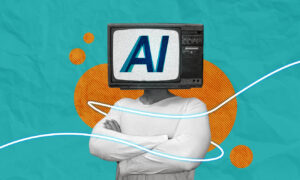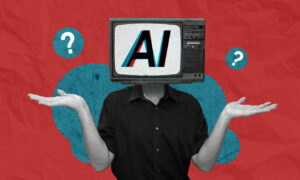5 steps for editing AI-generated copy
Rigorous editing is a must.

AI is becoming increasingly popular as a tool for creating a first draft of content.
But how do you take the C-student content churned out by an LLM to something you’d be proud to put your own name on?
It all comes down to editing.
As we’ve discussed in the past, good editing is so much more than just catching typos and style quirks. And AI isn’t going to make the same flubs those of us with fingers would make. No, with AI there are a few key components you must bear in mind when working with robo-copy. Here’s how to use AI as a time-saving first draft that still retains your unique voice and style:
- Fact check everything.
By now, we all should be familiar with the fact that AI sometimes makes stuff up. These hallucinations can seem very convincing, even citing people, sources and other specifics that make them seem real. And they may be! But you absolutely must check everything, whether you’re providing data for it to include or it’s pulling from the wider internet. Use a proper Google search and confirm each fact with credible sources – not the AI-generated prompt at the top of the search engine results page.
You’ll also want to ensure the AI followed your instructions correctly. Even if it said it correctly followed AP style, you may still find Oxford commas lurking. If you asked for 300 words, it might have sneakily given you 500. Don’t assume it’s right just because the robot sounds cheerful and subservient.
- Cut out fluff and cliches.
It’s important to understand how generative AI actually works. As OpenAI puts it, an LLM “learns how words tend to appear in context with other words and then uses what it has learned to predict the next most likely word that might appear in response to a user request, and each subsequent word after that.”
It’s all an elaborate madlib, basically. And because the people who wrote the content that the LLM was trained on tend to use cliches, writing created by those same models are likely to lean into the same cliches.
So it’s your job as an editor to find and root out those overused words and phrases.
- Add back better.
Once you’ve gotten rid of the puffery, it’s up to you to add back what AI never can: original thoughts. This is going to be what takes this from a boring, robot-written endeavor to something no one but you could write.
You might add in specific anecdotes, stories or data. You might add a sense of humor or sprinkle in a few jokes. You might add pathos and emotions that a robot will never be able to replicate in a way that feels true. This is where you truly elevate the piece, and where the task really moves from editing to writing. Use the AI-penned copy as a skeleton and your own experience to pile on muscle and skin to create something that feels vital and alive.
- Adjust for tone.
At this point, you should be meshing together your own writing and the AI copy. You need to ensure that everything sings cohesively and sounds like it was penned by one living person. This means ensuring that the language is similar: is half formal while the other uses slang and contractions? Figure out which you prefer and correct throughout. Does it adhere to your brand guidelines or does it sound like it was written by someone who’d never even heard of your organization before? Add in the special touches that make it unmistakably a product of your brand and no one else’s.
- Ask AI to help with finishing touches like SEO, headlines.
Once you’ve removed all traces of robot from the writing, it’s time to usher it back in. AI can be a big boost in putting the cherries on the top of a piece of writing, like crafting clickable headlines or subject lines and improving SEO.
Why is it good at these tasks when it’s still a bit shaky on writing? SEO is carried out by robots for the benefit of humans, so it’s a task that makes sense to automate. And headlines draw on what you’ve already created and edited – so it’s reformatting your work rather than trying to build something new. That’s where generative AI can excel.
What tips would you add to this list?
For more AI insights, joins us for the first AI Horizons Conference in Miami, Feb. 24-26.
Allison Carter is editorial director of PR Daily and Ragan.com. Follow her on Twitter or LinkedIn.








I really enjoyed learning how to edit AI effectively in copywriting! As AI continues to grow, it’s essential to evolve with it. I appreciate how this piece underscores the need for a solid foundation in writing and editing before bringing AI into the mix. It’s a great reminder that AI is a tool, not a substitute.
– Ella Kate Baker, Platform Magazine editor/writer